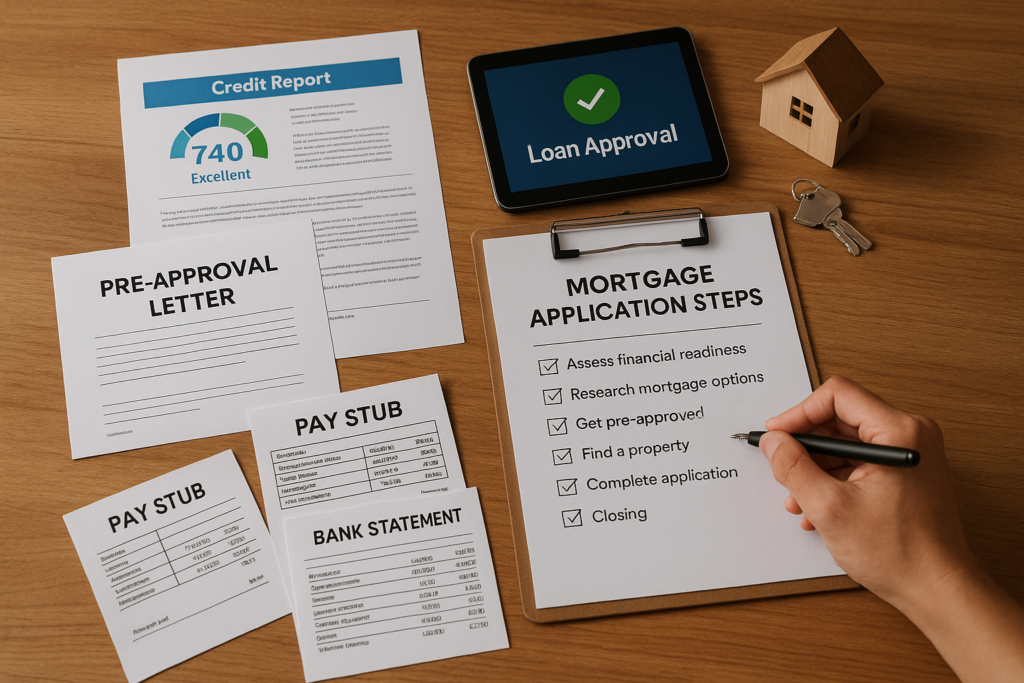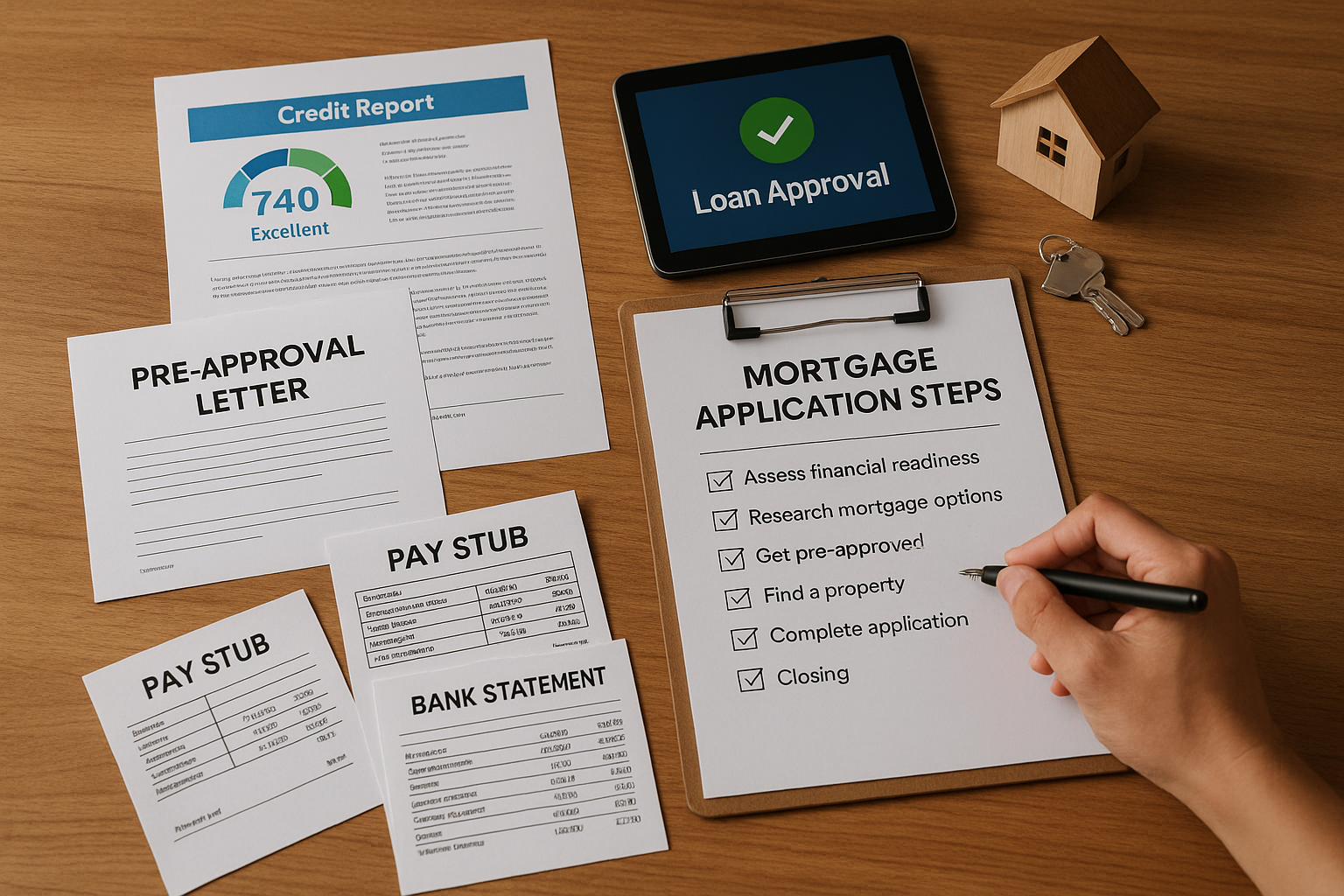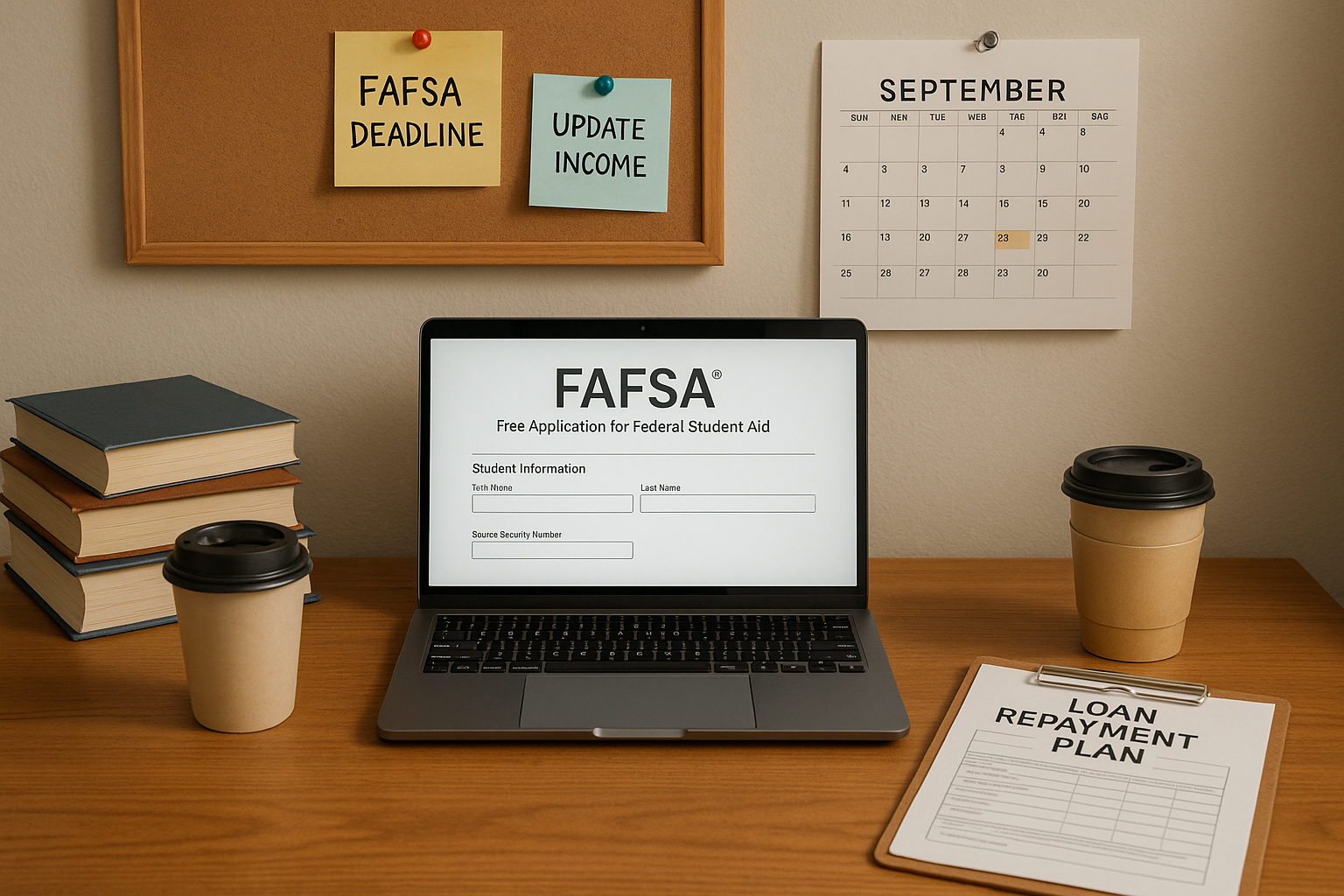
As young Latinos building our lives and careers in the United States, we know that buying a home is a major financial milestone, it’s a foundational step for building generational wealth. We are a community driving the housing market: Hispanic homeownership reached a record 9.8 million households in 2024, marking the largest annual increase among any racial or ethnic group for the second consecutive year (“2024 State of Hispanic Homeownership Report”). This momentum is nuestro poder, but converting that dream into reality requires understanding the US mortgage application process.
This process is a structured path to property ownership, where lenders assess your financial health under US regulations. We’ll walk through each step to ensure you feel confident and prepared.
Phase 1: Preparation is Power (Your Financial Readiness)
Before you even speak to a lender, the work begins with preparing your personal financial profile. For our community, this preparation is crucial because we often face unique barriers: Debt-to-Income (DTI) ratio and credit history are the two most common reasons for mortgage denial among Hispanic applicants (according to 2018 Home Mortgage Disclosure Act data, DTI accounted for 34% of denials and credit history for 20%) (Source: “Hispanic Americans: A Driving Force in the Housing Market”).
Here is where you take control:
- Audit Your Credit:
- Get a copy of your credit report and review it for errors.
- Know your credit score. For a conventional loan (the most common type) you generally need a score of at least 620. However, other government-backed options, like an FHA loan, may accept a score as low as 580 (Source: “What Credit Score Do You Need to Buy a House?”).
- Focus on paying down revolving debt (like credit cards) and making all payments on time.
- Master Your DTI Ratio:
- Your DTI ratio measures how much of your gross monthly income goes toward paying debts. Lenders use this to gauge your ability to handle a new mortgage payment.
- We want to keep this number low. Calculate it by dividing your total monthly debt payments (car loans, student loans, credit cards) by your gross monthly income.
- Calculate Your Budget & Savings:
- Determine what you can realistically afford for a monthly mortgage payment, property taxes (which vary widely in the US), and homeowner’s insurance.
- Save for your down payment (it can be as low as 3% for some conventional loans) and closing costs (typically 2% to 5% of the loan amount).
Phase 2: From Research to Pre-Approval
Once your financial house is in order, you can start engaging with the housing market.
- Research Loan Options:
- Explore the different types of loans available in the US, such as:
- Fixed-Rate Mortgages: Your interest rate and principal payment stay the same for the entire life of the loan. This offers stability.
- Adjustable-Rate Mortgages (ARMs): The rate is fixed for an initial period (e.g., 5 or 7 years) and then adjusts periodically.
- FHA Loans: Backed by the Federal Housing Administration, these are popular for first-time buyers and often have lower credit score and down payment requirements.
- Explore the different types of loans available in the US, such as:
- Get Pre-Approved:
- This is an official step where you submit your financial documents to a lender. They will pull your credit report and review your income, assets, and debts to determine how much money they are likely to lend you.
- Required Documents (Start gathering these now):
- Pay stubs and W-2 forms (typically for the last two years)
- Federal tax returns (last two years)
- Bank and investment statements (last two months)
- Photo ID and Social Security card
- The Benefit: A pre-approval letter is essential in the current competitive US housing market. It tells sellers, “I am a serious, qualified buyer.”
- Find Your Home & Make an Offer:
- Work with a real estate agent who understands your needs and the nuances of the local market.
- Once you find the perfect place, your agent will help you craft a competitive offer, including your pre-approval letter.
Phase 3: The Formal Application and Final Steps
With a property under contract, the process shifts to the lender verifying everything you’ve provided.
- Complete the Formal Application:
- You officially apply for the loan, providing all detailed financial and employment information, along with documentation specific to the property (like the signed purchase contract).
- Processing and Underwriting:
- This is the deepest dive the lender takes. Underwriting is the critical stage where a professional reviews the risk of the loan. They confirm:
- Your Finances (The Borrower): That your income is stable, your DTI is acceptable, and your credit history is sound.
- The Property (The Collateral): The lender requires a professional appraisal to ensure the home’s value is at least equal to the amount you are borrowing. They won’t approve a loan for a property that is overvalued.
- This is the deepest dive the lender takes. Underwriting is the critical stage where a professional reviews the risk of the loan. They confirm:
- Final Approval and Closing (The Meta Moment):
- After the underwriter is satisfied, you receive Final Loan Approval (sometimes called “Clear to Close”).
- The Closing meeting is where you sign dozens of legal documents, including the promissory note (your promise to repay) and the mortgage or deed of trust. You’ll pay your down payment and closing costs, and in exchange, you officially receive the keys. ¡Ya eres dueño! You are now a homeowner under US property law.
Conclusion
Navigating the US mortgage application can feel complicated, hermanos, but every step you take brings you closer to owning a piece of the American Dream. By preparing your credit score, controlling your DTI ratio, and having your documents ready, you are turning systemic challenges into personal triumphs. We are a community of hard workers, and understanding the system is the key to converting that hard work into lasting generational wealth for nuestra familia.
Keep following along for more strategies to empower your financial decisions!
👉 Ask Gabi, the “judgment free zone” for all of your financial questions!
Stay tuned! We got you!








